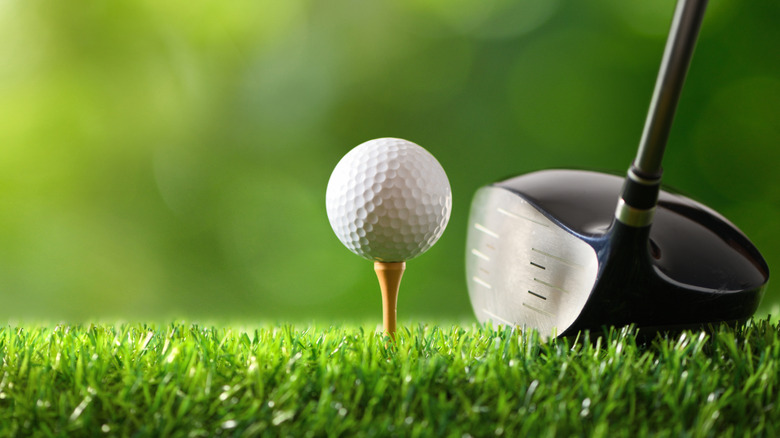Without Dimples, Golf Balls Would Be Impossible To Use
We may receive a commission on purchases made from links.
The game of golf, as we know it today, comes to us from the Scots, who discovered that their roughed-up balls traveled farther in the air than their smooth ones. A bramble pattern was added to the balls' surface in the mid-to-late 19th century, and the design was soon inverted, becoming dimples, in the early 20th century. Although the original balls of the game didn't have these valleys, playing golf as we know it today would be impossible without the tiny indentations.
From the moment of inertia (specifically rotational) to Newton's laws of motion, understanding golf is only possible with science. Science is also the reason golf balls need dimples. As air flows around a ball with a smooth surface, a low pressure or drag zone is created behind it, acting like a vacuum that slows it down. Adding tiny impressions creates pockets of turbulence so that the air can flow around it more tightly, effectively reducing the drag zone. As a result, the balls can fly more smoothly through the air and almost twice the distance as balls without dimples.
Additionally, the valleys improve the effect of Bernoulli's principle — the lifting force — on golf balls. A golf ball's lift is thanks to its backward spin. That's because the air pressure under a backward-spinning ball is greater than above it, allowing the ball to rise. Since the impressions create a layer of air around the ball, the effect is magnified and contributes up to half of the total lift.
The amount and size of the dimples on golf balls
While dimples are vital to the flight of golf balls, the United States Golf Association doesn't regulate how many each ball has, nor the shape and size of each impression. Not even the overall size of golf balls is the same, they only need to be 1.68 inches or larger. These characteristics all depend on the manufacturer and model.
For instance, Titleist Pro V1 golf balls have 388 dimples, while TaylorMade TP5x golf balls have 322 impressions. These are just two examples, though. Generally, the number of valleys on golf balls ranges from 200 to 500, although some manufacturers may add more. The record is 1,070 dimples on the Dimplit golf ball, which had 656 impressions about the size of a pinhead and 414 valleys of various larger sizes.
The average depth of dimples is 0.01 inches but adjusting the depth by as little as 0.001 inches can significantly change how golf balls move through the air. Despite the USGA not regulating these characteristics, it does test the effects of various impressions using a series of infrared sensors that track balls that are launched into the air at 190 mph or faster. The sensors can track and calculate trajectories with impeccable precision, allowing researchers to determine the aerodynamic lift and drag force that each impression pattern can produce.

